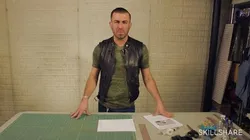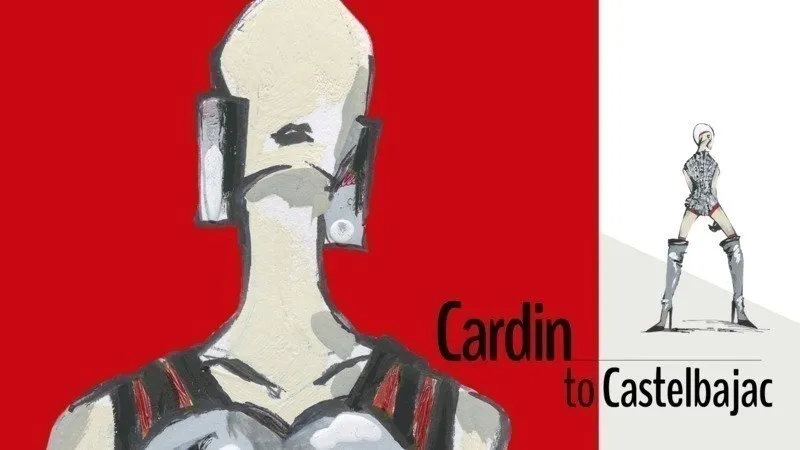
Fashion Design 
This course provides an in-depth exploration of fashion design, from technological developments to building a brand. Students will learn about 3D and digital printing, craftsmanship, aesthetics, materials, and fit. They will also explore collaboration, trend forecasting, and the influence of social movements, politics, and pop culture on design. ▼
ADVERTISEMENT
Course Feature
![]() Cost:
Cost:
Free
![]() Provider:
Provider:
Coursera
![]() Certificate:
Certificate:
Paid Certification
![]() Language:
Language:
English
![]() Start Date:
Start Date:
29th May, 2023
Course Overview
❗The content presented here is sourced directly from Coursera platform. For comprehensive course details, including enrollment information, simply click on the 'Go to class' link on our website.
Updated in [March 06th, 2023]
The first aspect of learning value that learners can obtain from this course is an understanding of the foundation of the fashion design process. Learners will gain an understanding of the technological developments in fashion design, 3D and digital printing, and artisanal design and craftsmanship. They will also learn how to build their brand through design aesthetics, materials, silhouettes and fit.
The second aspect of learning value that learners can obtain from this course is the importance of collaboration with other designers. Learners will learn how new modes of thinking and inspiration are integral to the design process. They will also gain an understanding of the importance of working with other designers to create a successful fashion brand.
The third aspect of learning value that learners can obtain from this course is the future of fashion forecasting. Learners will gain an understanding of how the observation of trends, social movements, politics, environmentalism, and pop culture are crucial to building their brand strategy. They will also learn how to use these elements to create a successful fashion brand.
The fourth aspect of learning value that learners can obtain from this course is the expertise of the faculty and industry experts. Learners will be able to learn from the expertise of Parsons faculty and industry experts such as Gabi Asfour, Keanan Duffty, Susanna Moyer, and Joshua Williams. They will gain an understanding of the fashion industry from the perspectives of these experts and be able to apply their knowledge to their own fashion designs.
[Applications]
Upon completion of this course, students should be able to apply their knowledge of fashion design to create innovative designs that reflect their own brand. They should be able to use 3D and digital printing, as well as artisanal design and craftsmanship, to create unique pieces. Additionally, students should be able to collaborate with other designers and use trends, social movements, politics, environmentalism, and pop culture to inform their brand strategy. Finally, students should be able to use fashion forecasting to anticipate future trends.
[Career Paths]
1. Fashion Designer: Fashion designers create clothing and accessories for the fashion industry. They use their creativity and technical skills to design garments and accessories that are both aesthetically pleasing and functional. They must be able to work with a variety of materials and fabrics, and have an understanding of the latest trends and fashion history. As the fashion industry continues to evolve, fashion designers must stay up to date on the latest trends and technologies to remain competitive.
2. Fashion Merchandiser: Fashion merchandisers are responsible for selecting and purchasing clothing and accessories for retail stores. They must have an eye for fashion trends and an understanding of the target market. They must also be able to negotiate with vendors and manage inventory. As the fashion industry continues to grow, fashion merchandisers must stay up to date on the latest trends and technologies to remain competitive.
3. Fashion Stylist: Fashion stylists are responsible for creating looks for clients, celebrities, and fashion shows. They must have an eye for fashion trends and an understanding of the target market. They must also be able to work with a variety of materials and fabrics, and have an understanding of the latest trends and fashion history. As the fashion industry continues to evolve, fashion stylists must stay up to date on the latest trends and technologies to remain competitive.
4. Fashion Photographer: Fashion photographers are responsible for capturing images of clothing and accessories for fashion magazines, catalogs, and websites. They must have an eye for fashion trends and an understanding of the target market. They must also be able to work with a variety of materials and fabrics, and have an understanding of the latest trends and fashion history. As the fashion industry continues to evolve, fashion photographers must stay up to date on the latest trends and technologies to remain competitive.
[Education Paths]
1. Bachelor of Arts in Fashion Design: This degree program provides students with a comprehensive understanding of the fashion industry, from design to production. Students learn about the history of fashion, the fundamentals of design, and the business of fashion. They also gain hands-on experience in the design process, from sketching to pattern-making to sewing. This degree program is ideal for those interested in pursuing a career in fashion design, styling, or merchandising.
2. Master of Arts in Fashion Design: This degree program is designed for those who want to take their fashion design skills to the next level. Students learn advanced design techniques, such as 3D printing and digital fabrication, as well as the business of fashion. They also gain experience in the production process, from sourcing materials to manufacturing. This degree program is ideal for those interested in pursuing a career in fashion design, styling, or merchandising.
3. Master of Science in Fashion Technology: This degree program focuses on the use of technology in fashion design. Students learn about the latest technologies, such as 3D printing and digital fabrication, as well as the business of fashion. They also gain experience in the production process, from sourcing materials to manufacturing. This degree program is ideal for those interested in pursuing a career in fashion technology, product development, or digital marketing.
4. Doctor of Philosophy in Fashion Design: This degree program is designed for those who want to pursue a career in research and academia. Students learn about the history of fashion, the fundamentals of design, and the business of fashion. They also gain hands-on experience in the design process, from sketching to pattern-making to sewing. This degree program is ideal for those interested in pursuing a career in fashion design, styling, or merchandising.
Pros & Cons

Comprehensive content and experienced professionals.

Covers topics from textiles to trend forecasting.

Fun and interesting.

Highly valuable information.

Lecturers read from scripts.

No feedback for reflective writing assignments.

Course is expensive.
Course Provider

Provider Coursera's Stats at AZClass
Discussion and Reviews
0.0 (Based on 0 reviews)
Explore Similar Online Courses

UI & UX Design Tutorial : Wireframe Mockup & Design in Figma

Pandemic influenza: Introduction

Python for Informatics: Exploring Information

Social Network Analysis

Introduction to Systematic Review and Meta-Analysis

The Analytics Edge

DCO042 - Python For Informatics

Causal Diagrams: Draw Your Assumptions Before Your Conclusions

Whole genome sequencing of bacterial genomes - tools and applications

Make Your Own Clothing: Introduction to Garment Construction

Gaultier to Louboutin: Style & Strategy in French Fashion

Cardin to Castelbajac: Style in French Fashion
 Related Categories
Related Categories
 Popular Providers
Popular Providers
Quiz
 Submitted Sucessfully
Submitted Sucessfully
1. Who is the founder and creative director of threeASFOUR?
2. What is the importance of collaboration with other designers?
3. What is the focus of this course?


Start your review of Fashion Design